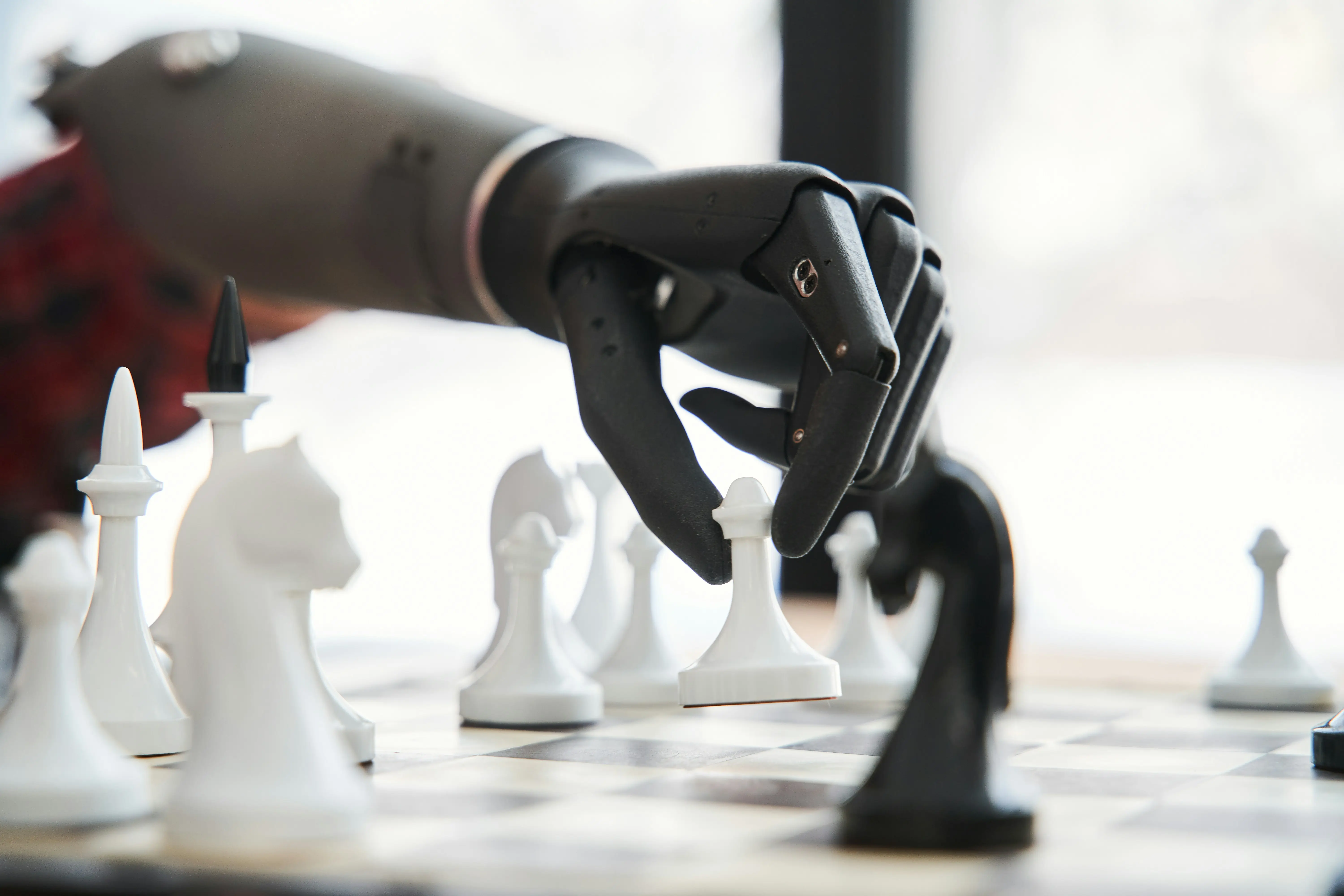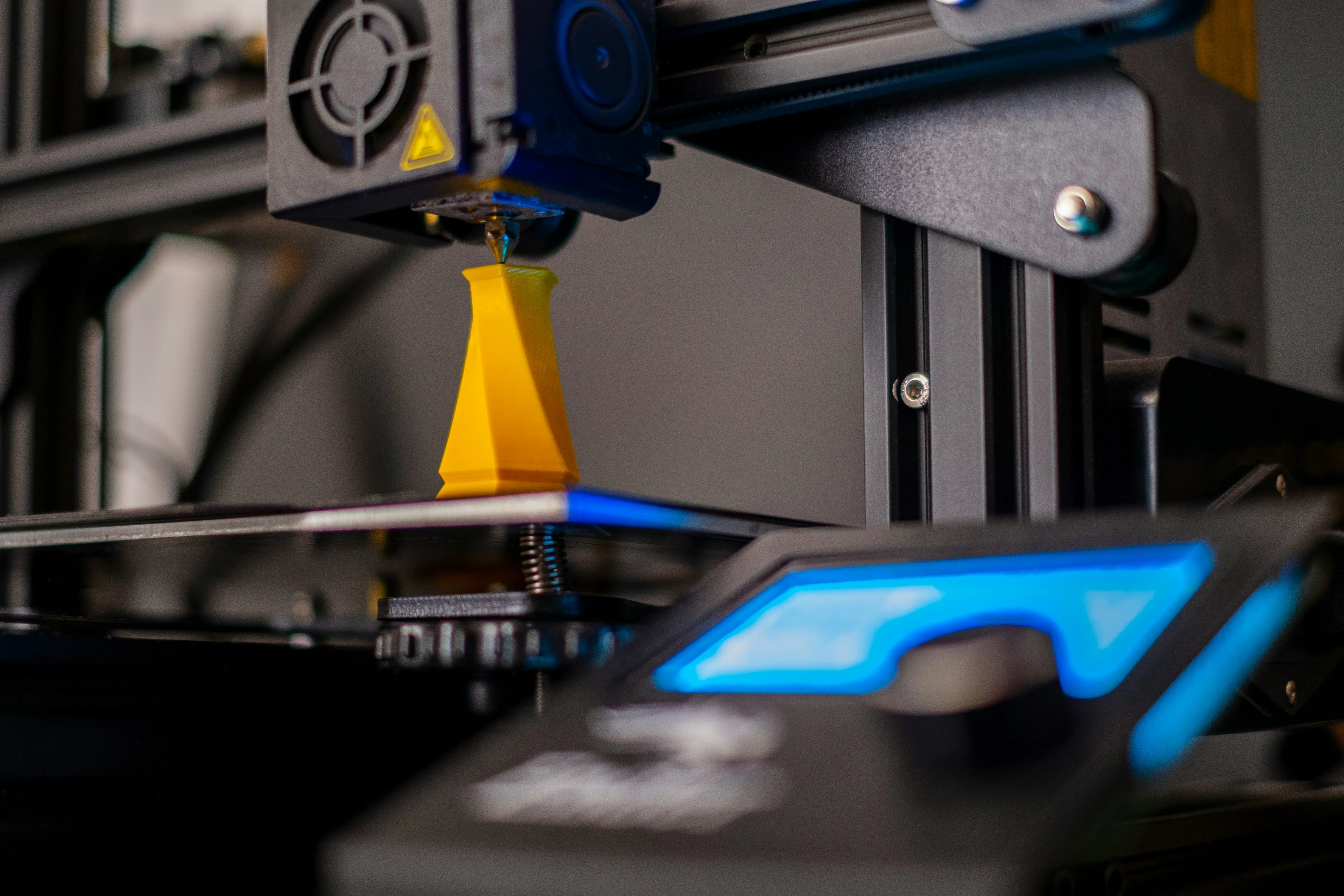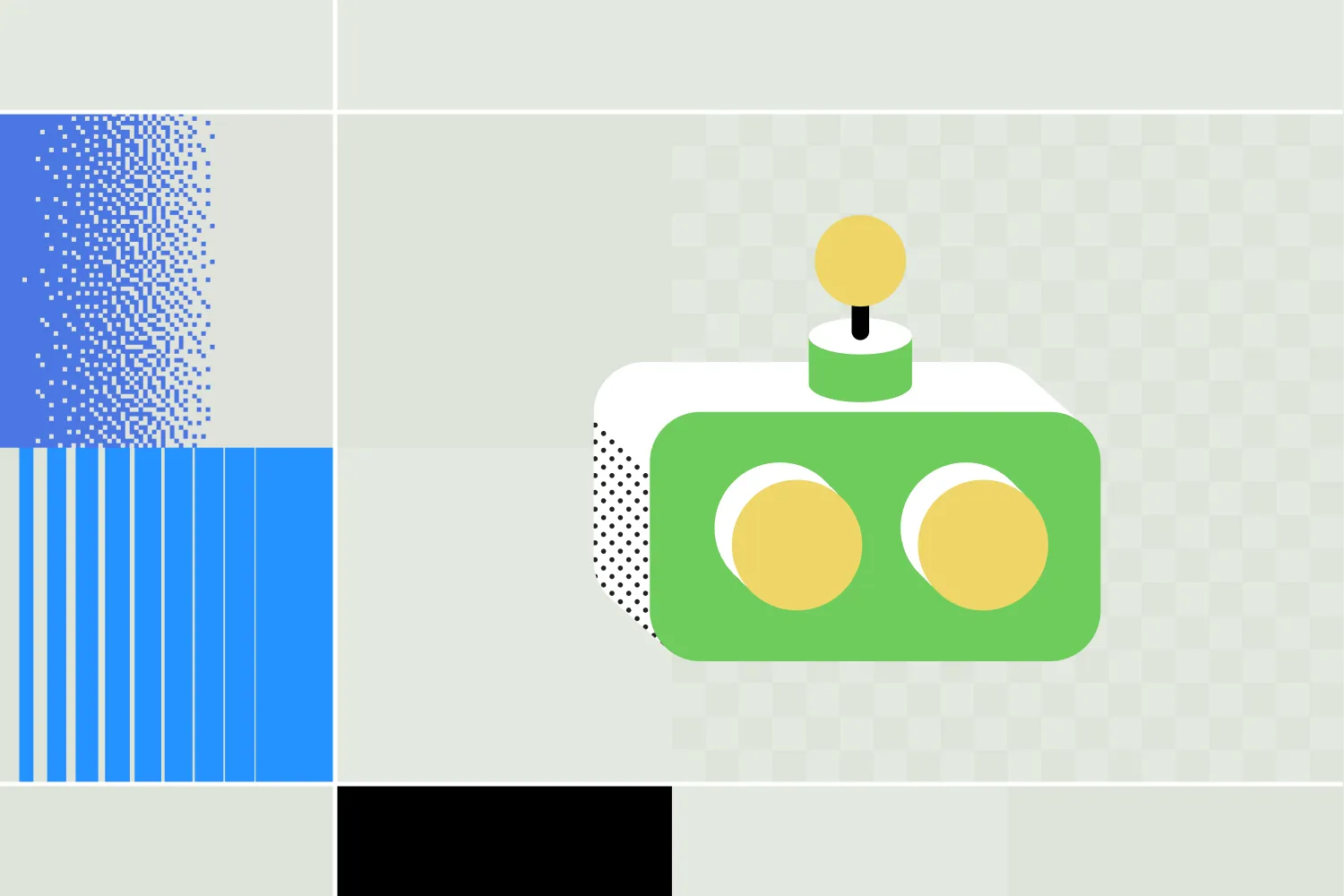- تتراوح وكلاء الذكاء الاصطناعي من أنظمة رد الفعل البسيطة التي تستجيب للمدخلات الحالية إلى وكلاء متطورين يخططون ويتعلمون وينسقون مهامًا معقدة عبر مجالات متنوعة.
- يعمل وكلاء رد الفعل البسيط بناءً فقط على الظروف الحالية، بينما يعزز وكلاء رد الفعل المعتمدون على النماذج عملية اتخاذ القرار باستخدام نماذج داخلية لتتبع وتوقع التغيرات في البيئة.
- تتضمن الأنظمة متعددة الوكلاء عدة وكلاء ذكاء اصطناعي يعملون معًا أو يتنافسون، مما يمكّن من تطبيقات متقدمة مثل تنسيق السيارات ذاتية القيادة في حركة المرور أو إدارة سلاسل التوريد المعقدة.
شهدت وكلاء الذكاء الاصطناعي تطورًا هائلًا في السنوات الأخيرة. ومع تعقيد تقنياتها وقدراتها، أصبح هناك العديد من أنواع وكلاء الذكاء الاصطناعي هذه الأيام.
الـ وكيل الذكاء الاصطناعي هو برنامج يؤدي مهامًا. وعلى عكس روبوت الدردشة التقليدي، يمكنه اتخاذ إجراءات نيابة عن المستخدم.
هناك مجموعة واسعة من وكلاء الذكاء الاصطناعي، من أجهزة قياس الحرارة الذكية والسيارات ذاتية القيادة، إلى وكلاء بواجهات محادثة. جميع هذه الحالات تندرج ضمن واحدة من الفئات السبع الرئيسية لوكلاء الذكاء الاصطناعي. في هذا المقال، سأستعرض الأنواع السبعة الرئيسية لوكلاء الذكاء الاصطناعي وبعض الأمثلة الواقعية على وكلاء الذكاء الاصطناعي.
1. وكلاء رد الفعل البسيط
وكيل رد الفعل البسيط هو نظام ذكاء اصطناعي يتخذ قراراته بناءً فقط على المدخلات الحالية من بيئته.
يستخدم مجموعة من قواعد الشرط-الفعل لربط المدخلات الملحوظة باستجابات محددة. عندما يكتشف حالة معينة في البيئة، ينفذ القاعدة المقابلة.
ليس لديه ذاكرة أو نموذج داخلي للعالم — لذا يمكنه العمل بفعالية فقط في بيئات يمكن ملاحظتها بالكامل حيث يمكن اتخاذ كل قرار بناءً على المدخل الحالي فقط.
أمثلة على وكلاء رد الفعل البسيط
- منظم حرارة يشغل التدفئة إذا كان الجو باردًا جدًا
- روبوت يغير اتجاهه عند اصطدامه بجدار (مرحبًا، رومبا مع قطة فوقه)
- روبوت محادثة أساسي يرد بـ "مرحبًا!" عندما يقول المستخدم "مرحبًا"
.webp)
2. وكلاء رد الفعل المعتمدون على النماذج
وكيل رد الفعل المعتمد على النموذج هو وكيل ذكاء اصطناعي يتخذ قراراته بناءً على كل من المدخل الحالي ونموذج داخلي للعالم.
على عكس وكلاء رد الفعل البسيطة، فإن هذا النوع يتتبع حالة البيئة مع مرور الوقت. يستخدم نموذجًا — أي معلومات مخزنة حول كيفية عمل العالم — لملء الفجوات عندما لا تكون البيئة قابلة للملاحظة بالكامل.
عندما يتلقى مدخلًا جديدًا، يقوم بتحديث حالته الداخلية، ويستشير قواعد الشرط-الفعل، ويختار أفضل استجابة بناءً على كل من المدخل الحالي وما يعرفه من التفاعلات السابقة.
أمثلة على وكلاء رد الفعل المعتمدين على النماذج
- روبوت تنظيف يتذكر تخطيط الغرفة ويتجنب المناطق التي قام بتنظيفها بالفعل
- وكيل LLM يواصل المحادثة مع تتبع مدخلات المستخدم السابقة
- ذكاء اصطناعي في الألعاب يتفاعل ليس فقط مع ما يراه بل أيضًا مع ما يعرفه من مراحل سابقة في المباراة

3. الوكلاء المتعلمون
الوكيل المتعلم هو وكيل ذكاء اصطناعي يحسن أداءه مع مرور الوقت من خلال التعلم من تجاربه.
يتكون من أربعة مكونات رئيسية: عنصر التعلم، عنصر الأداء، المقيم، ومولد المشكلات.
يختار عنصر الأداء الإجراءات، بينما يعدل عنصر التعلم سلوكه بناءً على التغذية الراجعة. يقوم المقيم بتقييم نتائج الأفعال باستخدام معيار محدد مسبقًا، ويقترح مولد المشكلات إجراءات جديدة للتجربة من أجل تعلم أفضل.
تسمح هذه البنية للوكيل بالتكيف مع التغيرات، وتحسين الاستراتيجيات، والعمل بفعالية حتى في البيئات غير المألوفة.
أمثلة على الوكلاء المتعلمين
- وكيل ذكاء اصطناعي للعملات الرقمية يعدل استراتيجيات التداول بناءً على أداء السوق
- محرك توصية يتحسن في اقتراح المنتجات بناءً على سلوك المستخدم
- روبوت دردشة للرعاية الصحية يتعلم من تفاعلات المرضى لتحسين دقة الفرز الطبي

4. وكلاء قائمون على المنفعة
الوكيل القائم على المنفعة هو وكيل ذكاء اصطناعي يختار الأفعال بناءً على النتيجة المتوقعة التي توفر أعلى قيمة إجمالية أو "منفعة".
بدلاً من مجرد السعي لتحقيق هدف، يقوم هذا الوكيل بتقييم النتائج المحتملة المختلفة ويختار النتيجة التي تعظم دالة المنفعة المحددة مسبقًا.
يتيح له ذلك التعامل مع الحالات التي توجد فيها عدة طرق لتحقيق الهدف، أو حيث يجب إجراء مقايضات. يتطلب ذلك القدرة على مقارنة الخيارات، وتوقع النتائج، وترتيب النتائج حسب التفضيلات أو الأولويات.
أمثلة على الوكلاء القائمين على المنفعة
- روبوت دردشة للمبيعات يعطي الأولوية للعملاء المحتملين بناءً على احتمالية التحويل
- روبوت تداول أسهم يوازن بين المخاطر والعائد لتعظيم الأرباح على المدى الطويل
- روبوت دردشة للأعمال ينظم الاجتماعات لتقليل التعارضات وزيادة الراحة
5. الوكلاء الهرميون
الوكيل الهرمي هو وكيل ذكاء اصطناعي ينظم عملية اتخاذ القرار لديه في عدة طبقات أو مستويات، حيث تتعامل المستويات العليا مع الأهداف المجردة بينما تدير المستويات الدنيا الأفعال المحددة.
يقوم هذا الوكيل بتقسيم المهام المعقدة إلى مهام فرعية أصغر، مع تحمل كل مستوى من الهرم مسؤولية نطاق مختلف من اتخاذ القرار.
قد تخطط الطبقات العليا لاستراتيجيات طويلة المدى، بينما تتعامل الطبقات الدنيا مع بيانات المستشعرات الفورية والاستجابات اللحظية. يتدفق الاتصال بين الطبقات، مما يسمح للوكيل بتنسيق الأهداف العامة مع التنفيذ التفصيلي.
تسهل هذه البنية إدارة التعقيد وتوسيع السلوك عبر أطر زمنية أو أولويات مختلفة.
أمثلة على الوكلاء الهرميين
- في التصنيع، يخطط وكيل عالي المستوى لعملية التجميع بينما تتحكم المستويات الأدنى في الأذرع الروبوتية والتوقيت
- في مصنع ذكي، تدير طبقات مختلفة جداول الإنتاج وتنسيق الآلات والعمليات الفعلية

6. وكلاء قائمون على الأهداف
الوكيل القائم على الأهداف هو وكيل ذكاء اصطناعي يتخذ قراراته من خلال تقييم الأفعال التي ستساعده في تحقيق هدف محدد.
يتم إعطاء الوكيل هدفًا أو أكثر — وهي النتائج المرجوة التي يسعى لتحقيقها. يستخدم خوارزميات البحث أو التخطيط لاستكشاف تسلسلات الأفعال الممكنة، ثم يختار تلك التي من المرجح أن تقوده إلى الهدف.
على عكس وكلاء رد الفعل، لا يقتصر على الاستجابة فقط — بل يفكر في العواقب المستقبلية قبل التصرف. هذا يجعله أكثر مرونة وقدرة في البيئات الديناميكية أو غير المألوفة، لكنه أيضًا أكثر تطلبًا من الناحية الحسابية.
أمثلة على الوكلاء القائمين على الأهداف
- نظام ملاحة يحسب أفضل طريق إلى الوجهة
- ذكاء اصطناعي لحل الألغاز يبحث عن الحركات التي ستؤدي إلى إكمال اللغز
- ذراع روبوتية تخطط لتسلسل الحركات اللازمة لتجميع منتج بنجاح
7. الأنظمة متعددة الوكلاء (MAS)
وأخيرًا وليس آخرًا: النظام متعدد الوكلاء.
النظام متعدد الوكلاء (MAS) هو نظام يتكون من عدة وكلاء ذكاء اصطناعي يتفاعلون معًا (أو أحيانًا يتنافسون) لتحقيق أهداف فردية أو مشتركة.
يعمل كل وكيل في النظام بشكل مستقل، مع قدراته وأهدافه وإدراكه الخاص للبيئة.
يتواصل هؤلاء الوكلاء ويتعاونون — إما مباشرة عبر الرسائل أو بشكل غير مباشر من خلال مراقبة التغيرات في البيئة. يمكن للنظام ككل حل المشكلات التي تتجاوز قدرة وكيل واحد على التعامل معها.
يمكن أن تكون الأنظمة متعددة الوكلاء تعاونية أو تنافسية أو مزيجًا من الاثنين، حسب التصميم والأهداف.
أمثلة على الأنظمة متعددة الوكلاء
- مركبات ذاتية القيادة تنسق عند التقاطعات لتجنب الاصطدامات
- مجموعة من روبوتات مالية تدير الفواتير واكتشاف الاحتيال والتقارير من خلال أتمتة سير العمل بالذكاء الاصطناعي
- نظام سلسلة توريد حيث يدير وكلاء مختلفون المخزون، والشحن، وتوقع الطلب.

أنشئ وكلاء ذكاء اصطناعي مخصصين
ليس من الصعب إنشاء وكيل ذكاء اصطناعي مخصص — ويمكنك القيام بذلك مجانًا.
يقدم Botpress أداة إنشاء تدفقات بصرية بالسحب والإفلات، وأمان على مستوى المؤسسات، ومكتبة تعليمية واسعة، ومجتمع Discord نشط يضم أكثر من 20,000 من بناة الروبوتات.
منصتنا القابلة للتوسعة تعني أنه يمكنك بناء أي روبوت دردشة مخصص مع أي تكامل مخصص — ومركز التكامل لدينا مليء بموصلات جاهزة لأكبر القنوات.
ابدأ البناء اليوم. إنها مجانية.
الأسئلة الشائعة
ما هي أنواع وكلاء الذكاء الاصطناعي السبعة؟
الأنواع السبعة هي: وكلاء رد الفعل البسيط، وكلاء رد الفعل المعتمدون على النماذج، الوكلاء المعتمدون على الأهداف، الوكلاء المعتمدون على المنفعة، الوكلاء المتعلمون، الوكلاء الهرميون، وأنظمة الوكلاء المتعددة.
هل ChatGPT وكيل ذكاء اصطناعي؟
نعم، يمكن اعتبار ChatGPT وكيل ذكاء اصطناعي — حيث يستقبل المدخلات، ويعالجها، وينتج ردودًا، وغالبًا ما يستخدم نهجًا قائمًا على الأهداف أو المنفعة حسب طريقة استخدامه.
ما هي العوامل الذكية، وكيف تعمل في البيئات الرقمية؟
الوكلاء الأذكياء هم كيانات مصممة للعمل في بيئات رقمية متنوعة. يجمعون المعرفة من محيطهم، ويقيّمون الوضع الحالي، وينفذون إجراءات لتحقيق أهداف محددة مسبقًا. ويتأثر أداؤهم بالأفعال الخارجية التي يتخذونها ضمن البيئات القابلة للملاحظة.
كيف تلعب الذكاء الاصطناعي دورًا في وظائف العوامل الذكية؟
يمنح الذكاء الاصطناعي الوكلاء الأذكياء القدرة على التعلم، والاستدلال، والتكيف. يستخدم الوكلاء الذكاء الاصطناعي لتعزيز قاعدة معرفتهم، مما يسمح باتخاذ قرارات أكثر تطورًا في بيئات مختلفة.
ما الذي يشكل قاعدة المعرفة للعوامل الذكية؟
تشمل معرفة الوكلاء الأذكياء معلومات عن البيئة، وقواعد محددة مسبقًا، وفهمًا أساسيًا للوضع الحالي. تشكل هذه المعرفة أساس عمليات اتخاذ القرار لديهم.
ما هو عنصر الأداء في سياق العوامل الذكية؟
يشير عنصر الأداء في الوكلاء الأذكياء إلى قدرتهم على تحقيق الأهداف واتخاذ قرارات تُحسّن من أفعالهم في بيئة معينة. وهو عنصر أساسي يحدد كفاءة وفعالية الوكيل.
هل يمكن للعوامل أن تعمل ضمن هياكل هرمية؟
نعم، الوكلاء الهرميون هم نوع من الوكلاء الأذكياء الذين يعملون ضمن مستويات منظمة. يشرف الوكلاء في المستويات العليا على اتخاذ القرارات العامة، بينما يتولى الوكلاء في المستويات الأدنى تنفيذ المهام المحددة ضمن الإطار الأوسع. تتيح هذه البنية الهرمية العمل بكفاءة في البيئات المعقدة.
هل تعمل العوامل الذكية بذكاء محدود؟
نعم، العديد من الوكلاء الأذكياء يعملون بذكاء محدود، أي أن لديهم نطاقًا محددًا من المعرفة والقدرات. تساعدهم هذه المحدودية على التركيز في مهام وبيئات محددة تكون خبرتهم فيها أكثر ملاءمة.





.webp)

